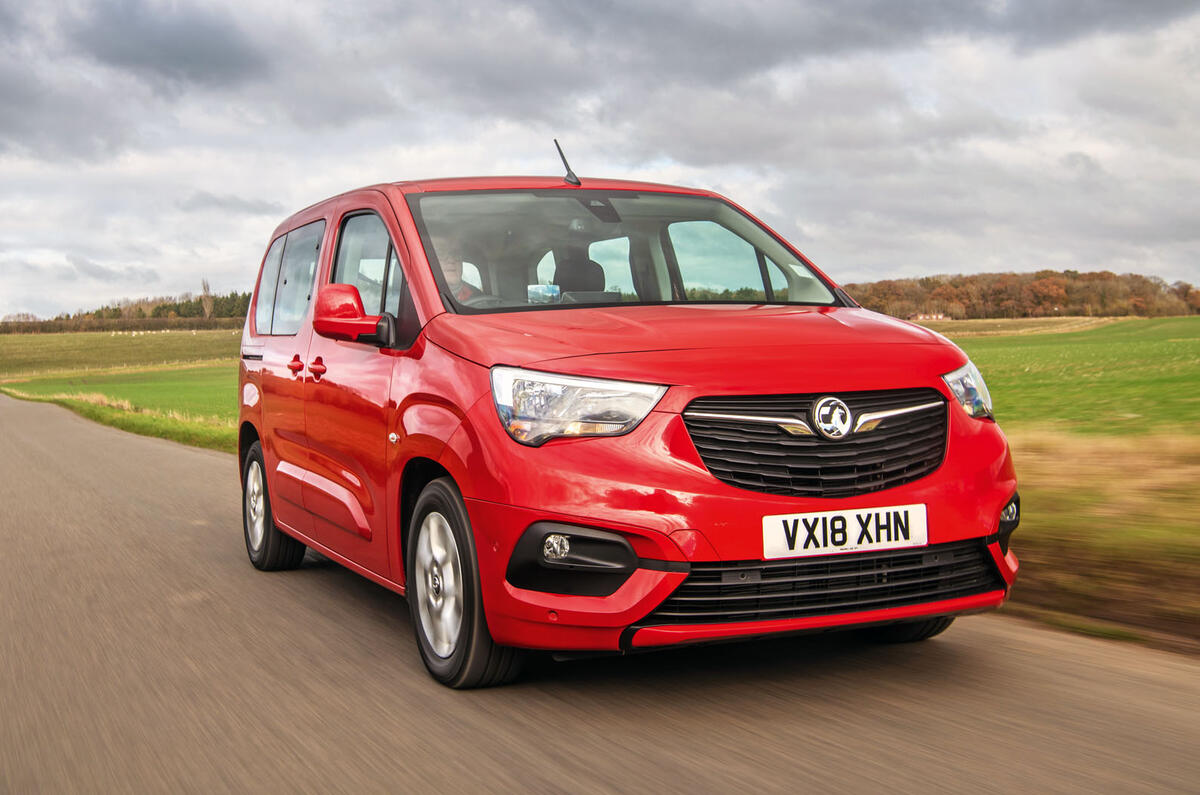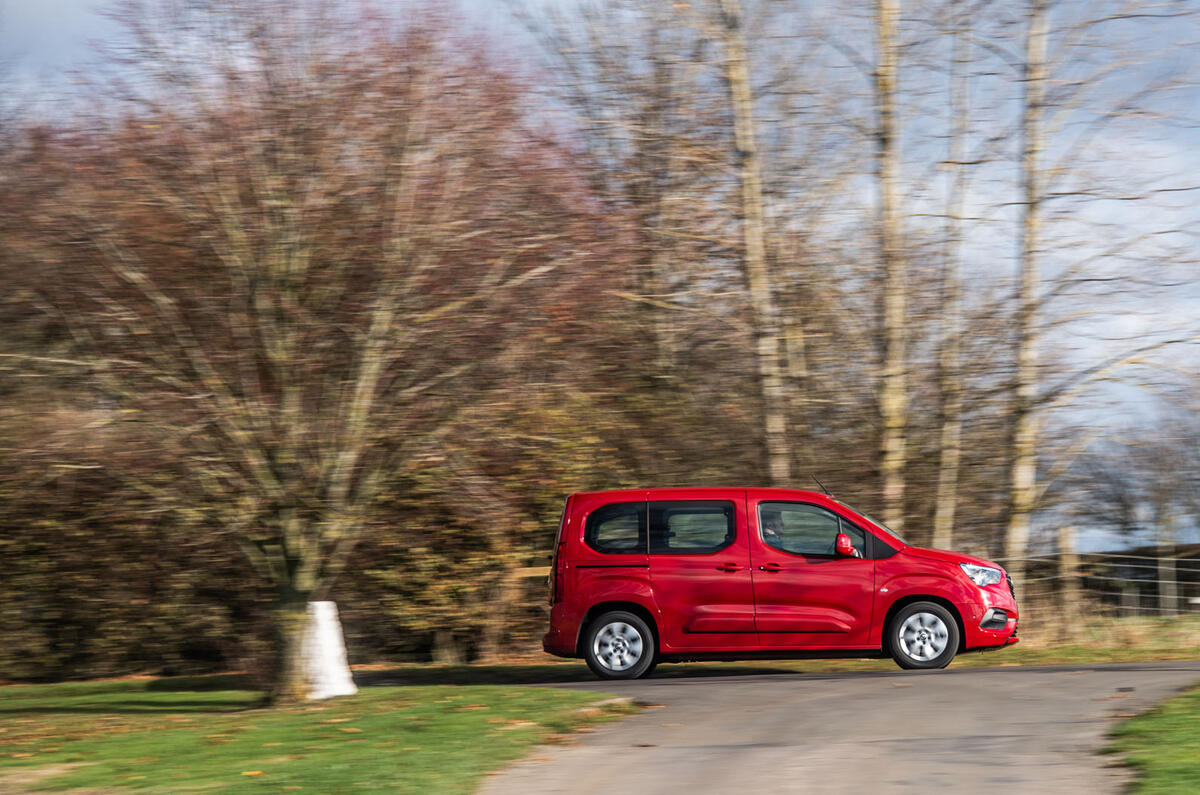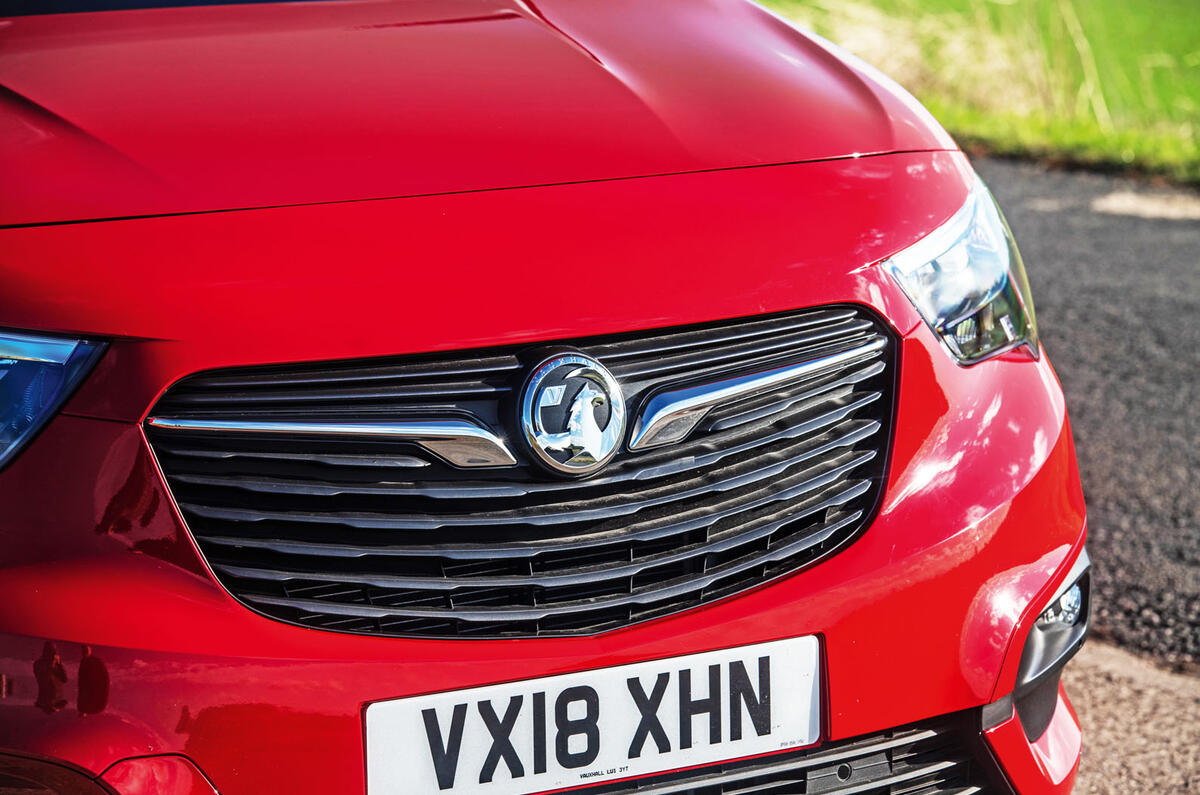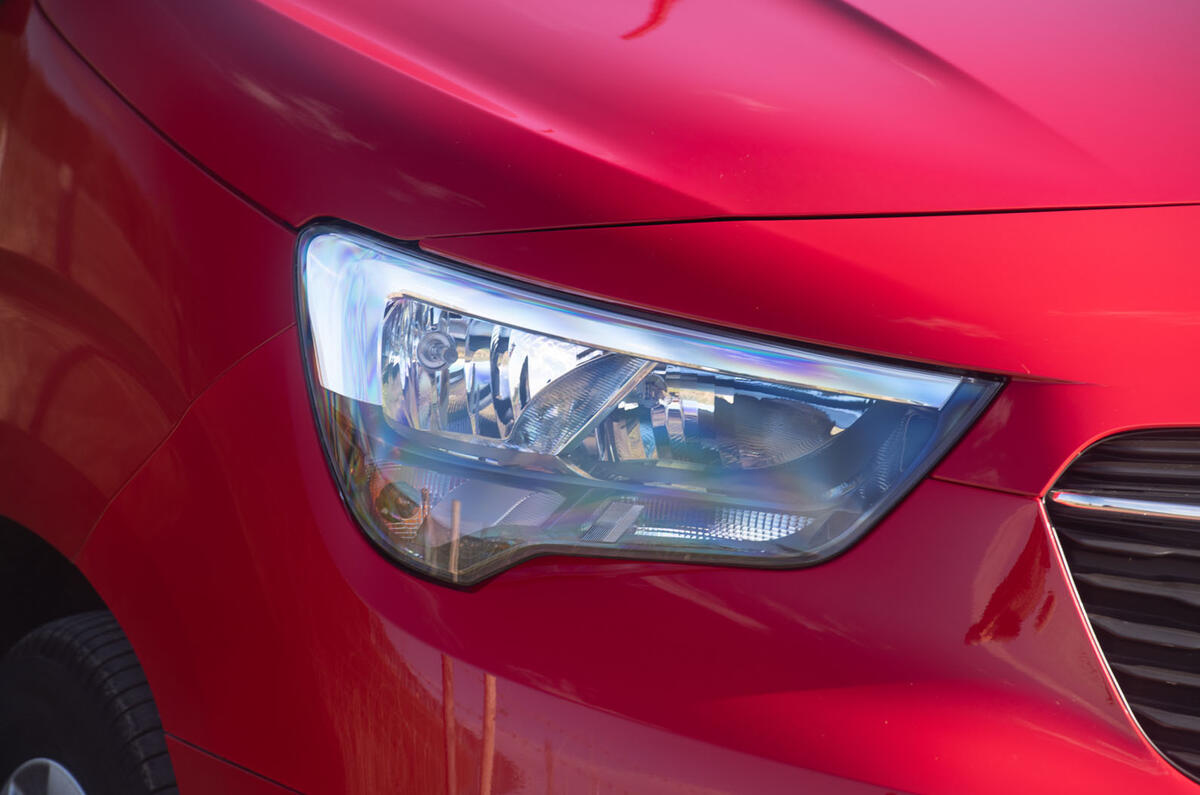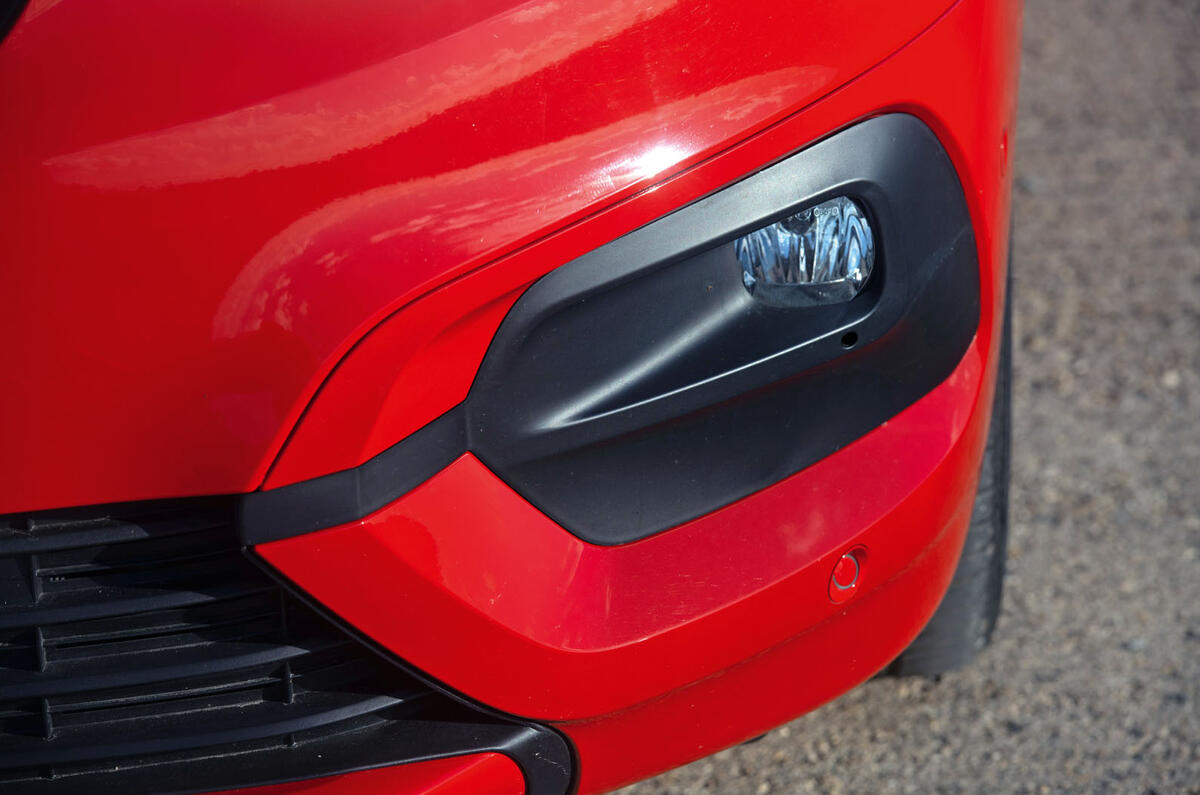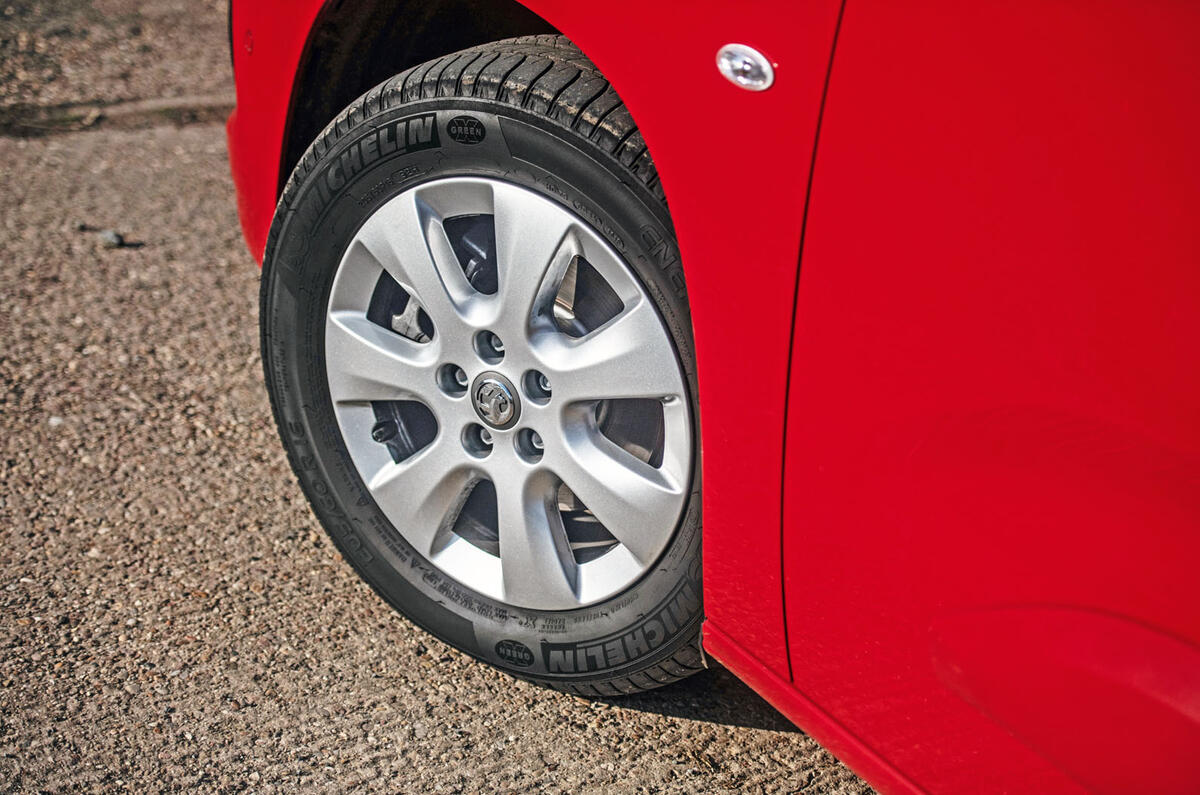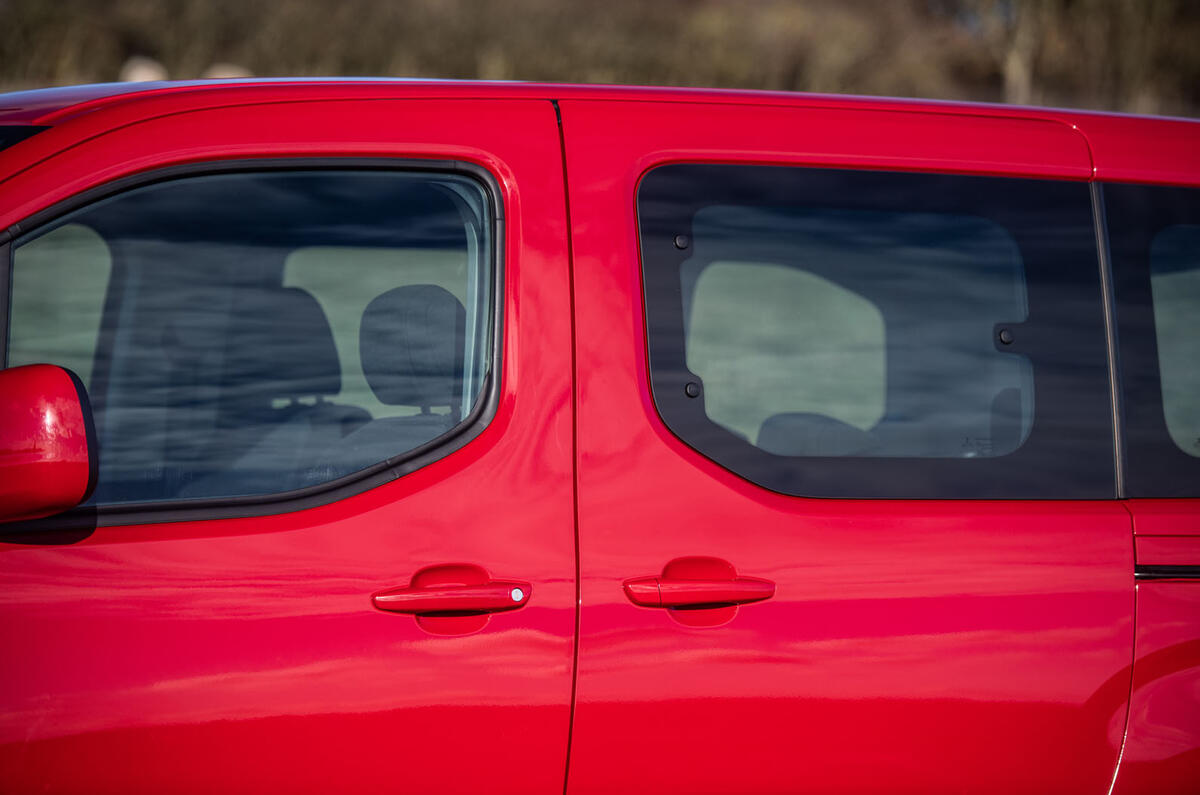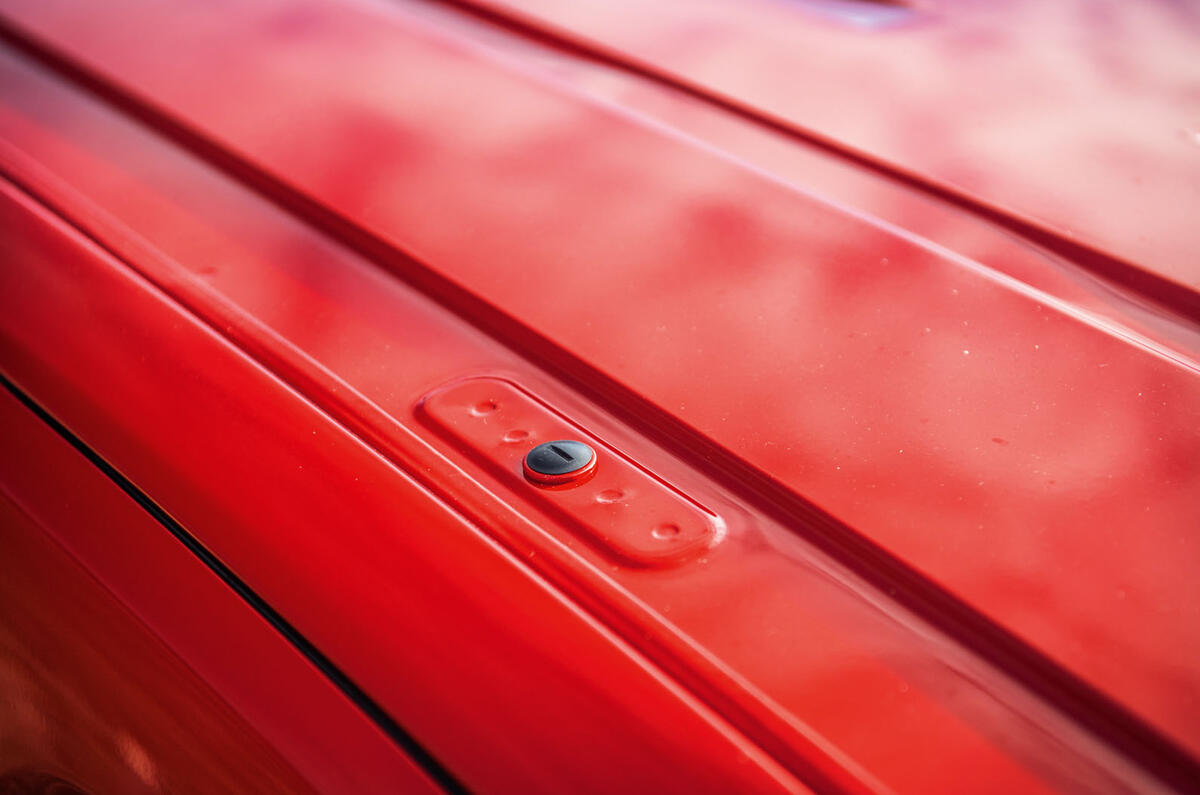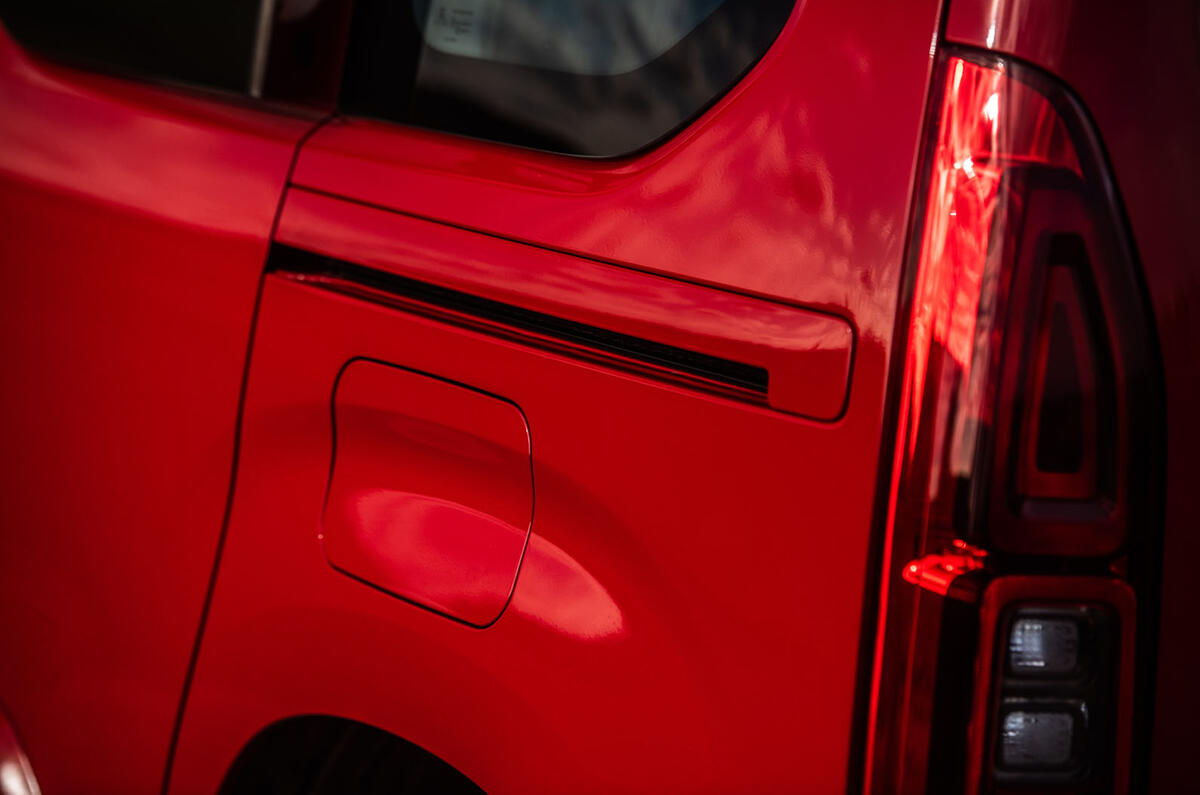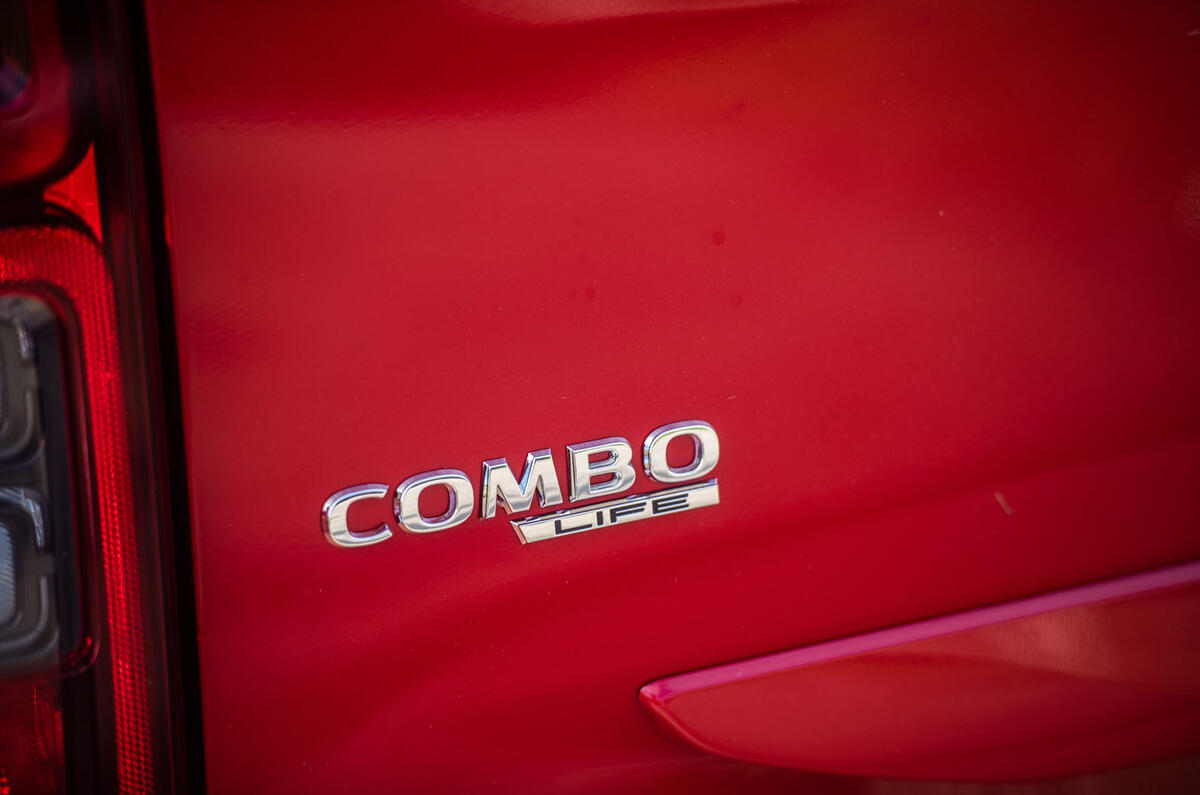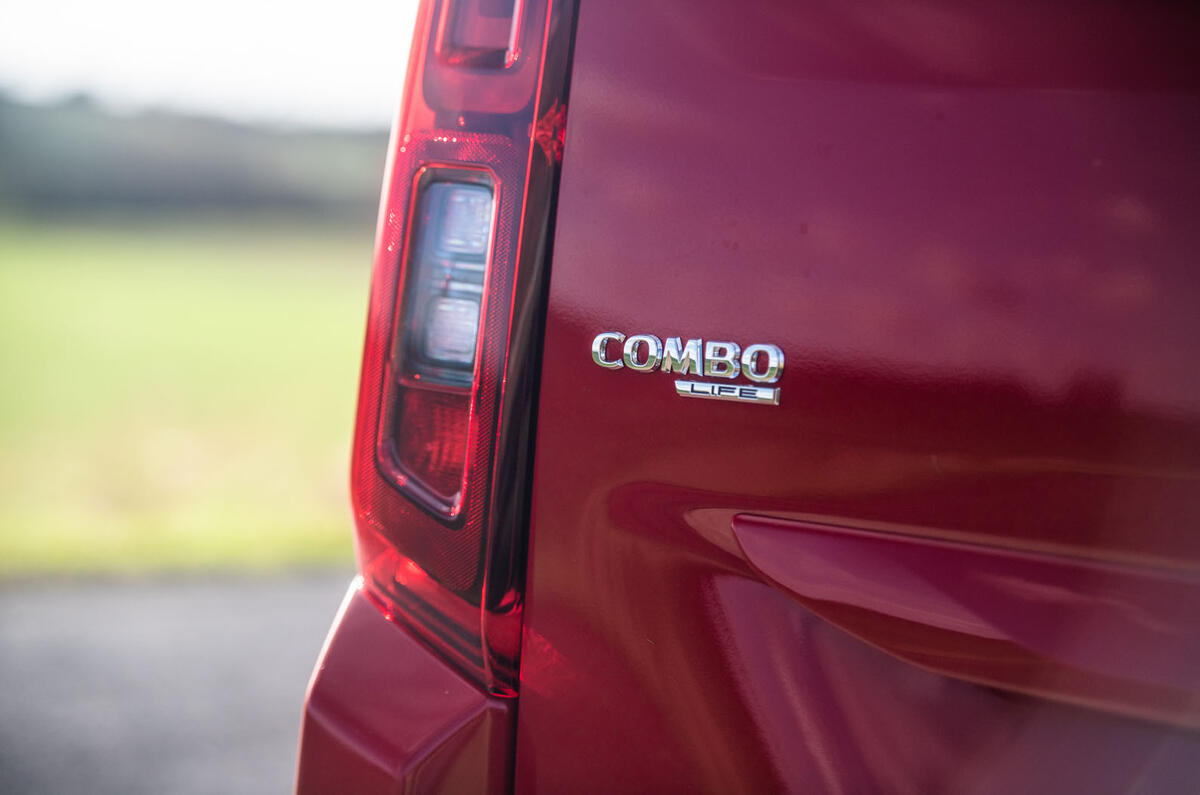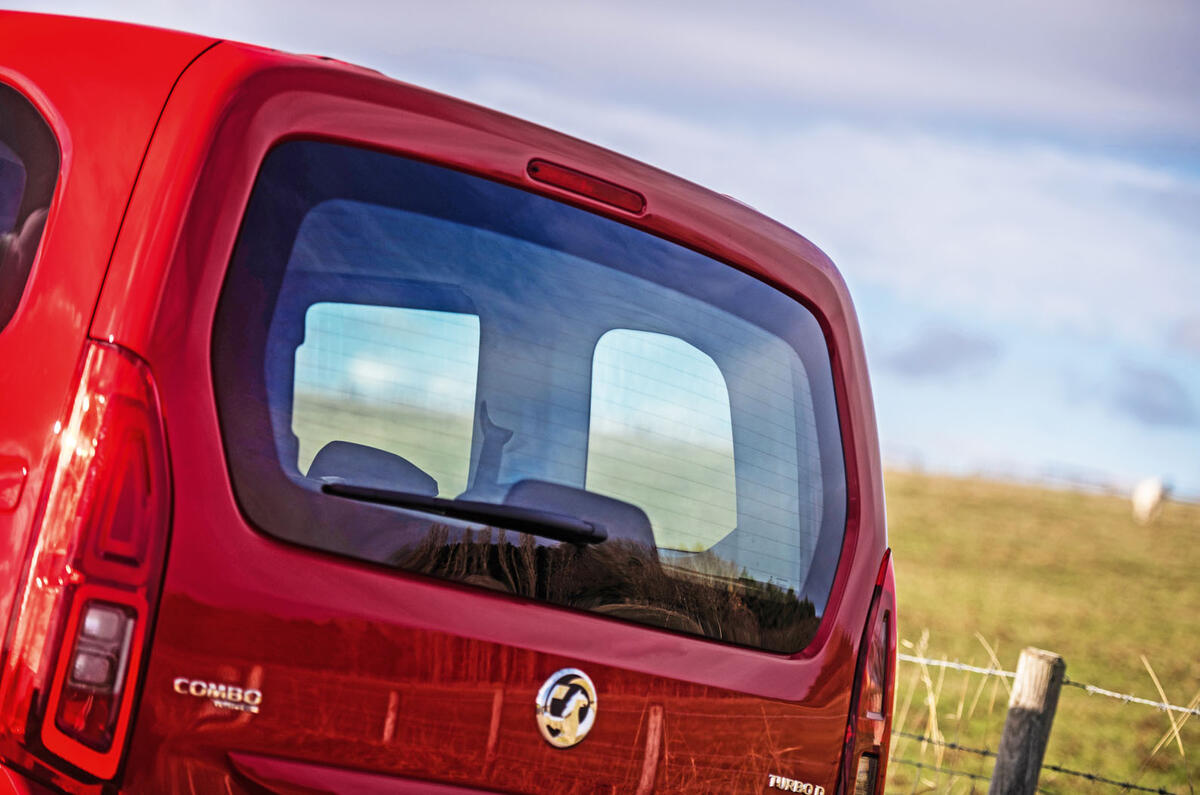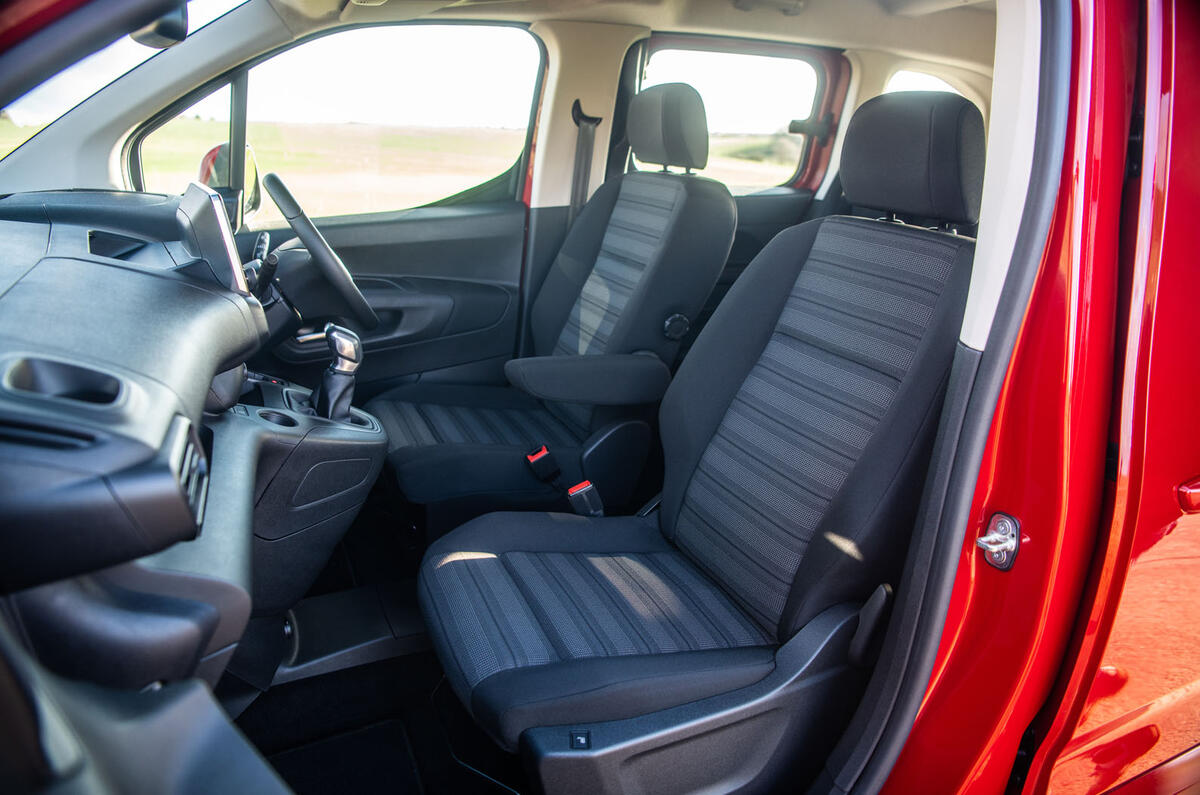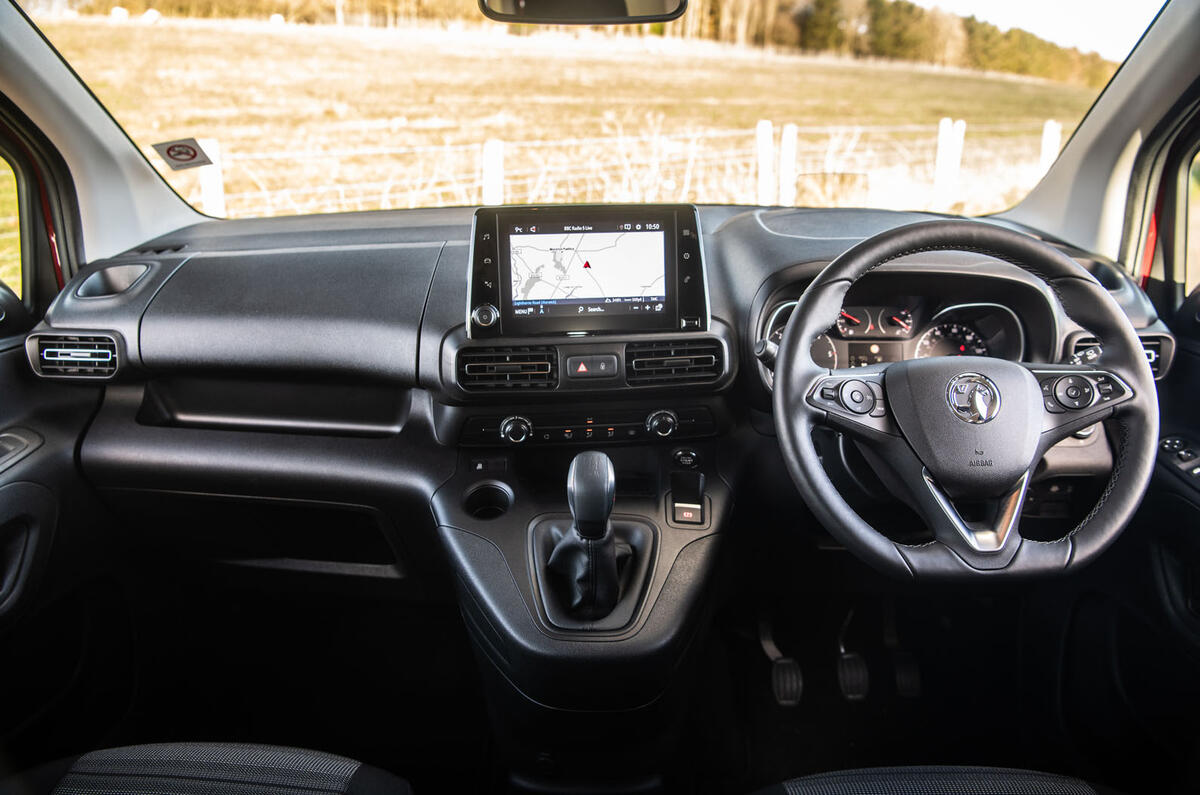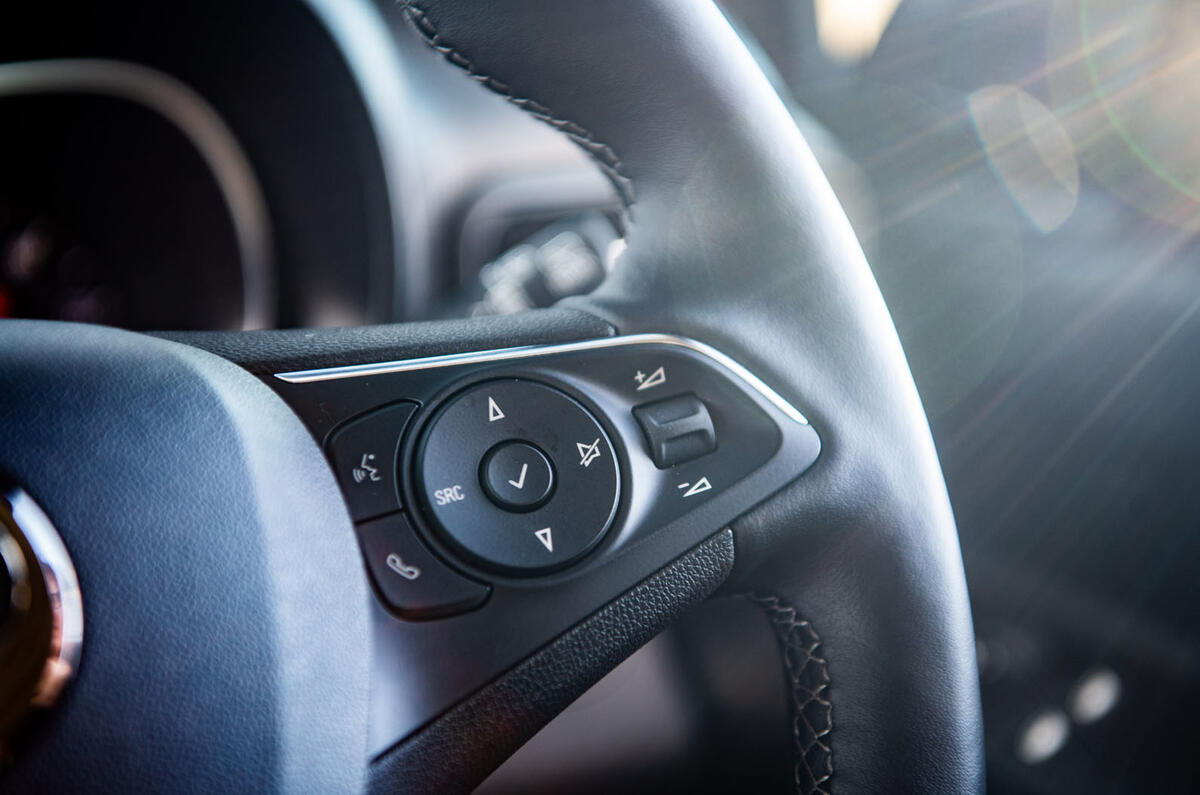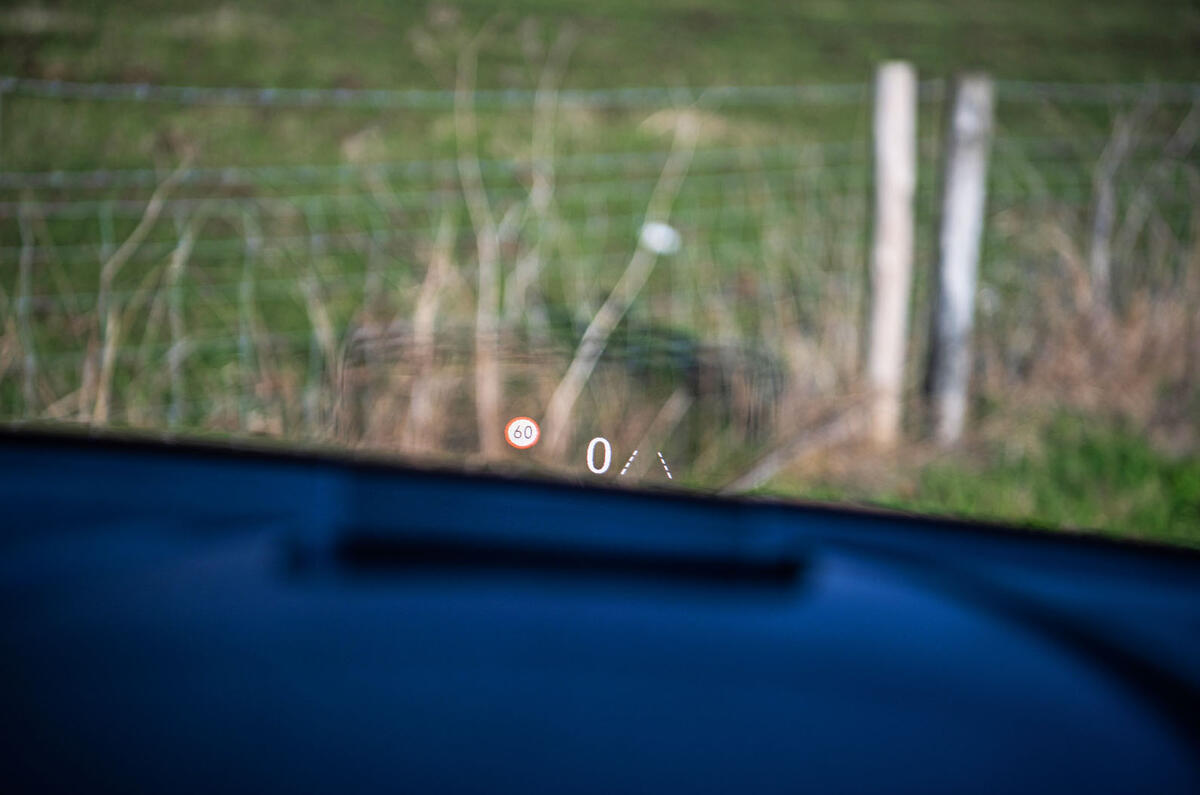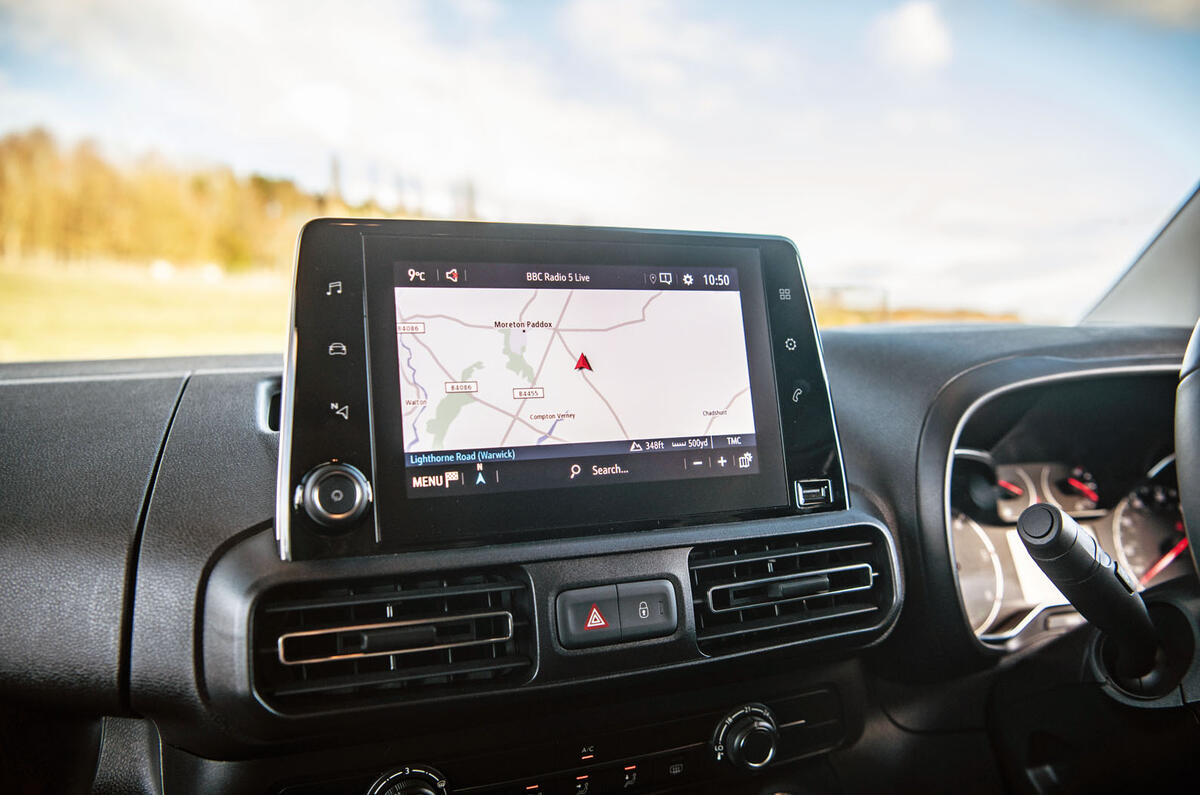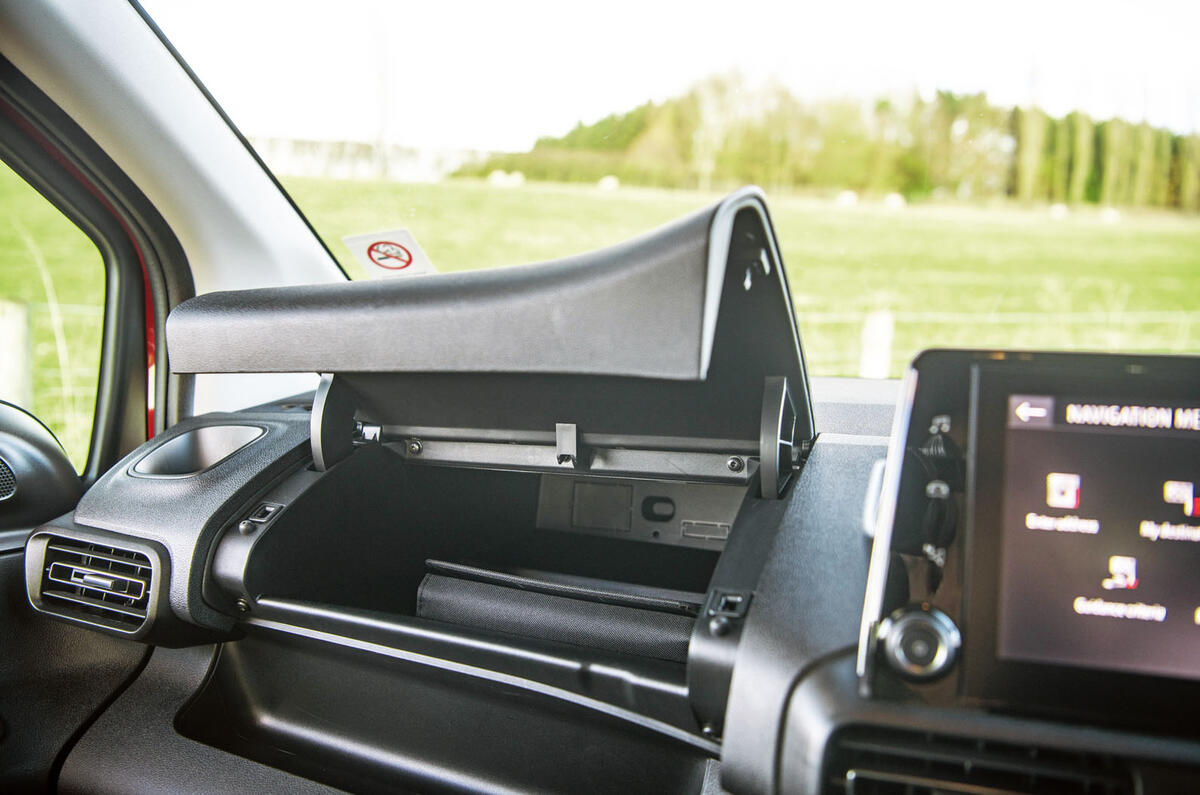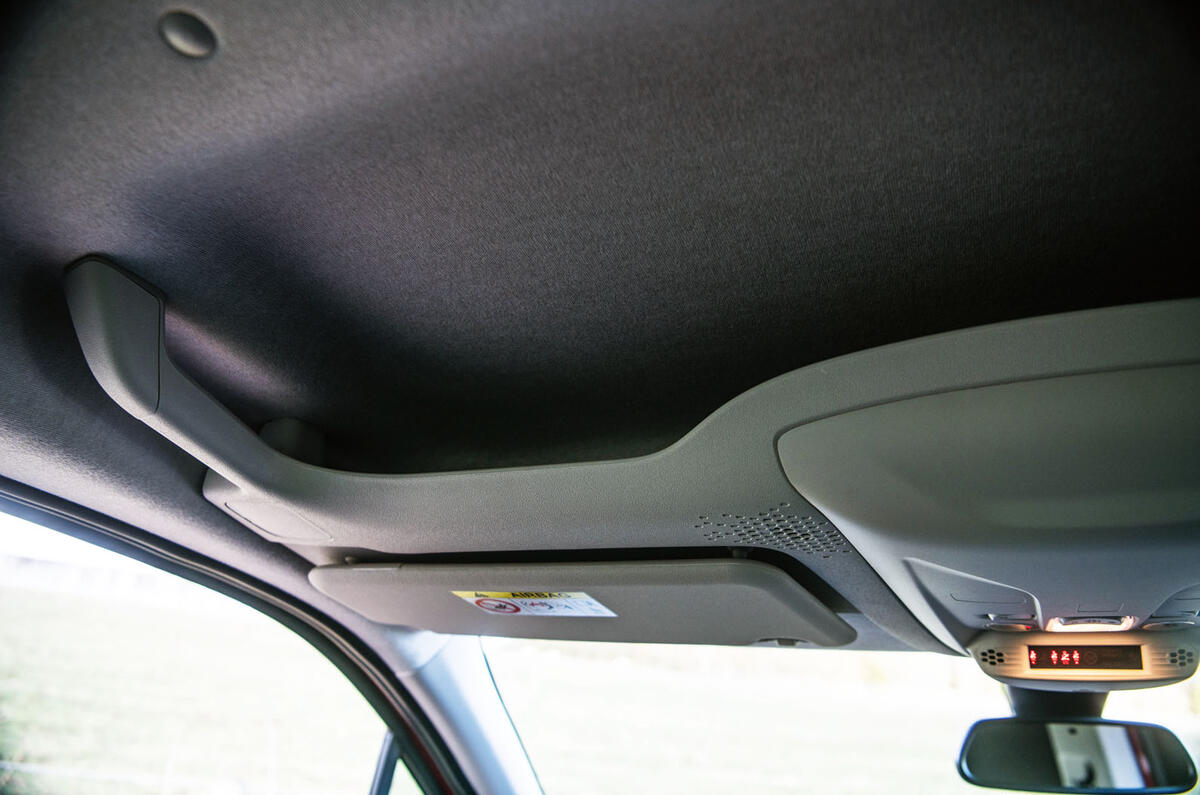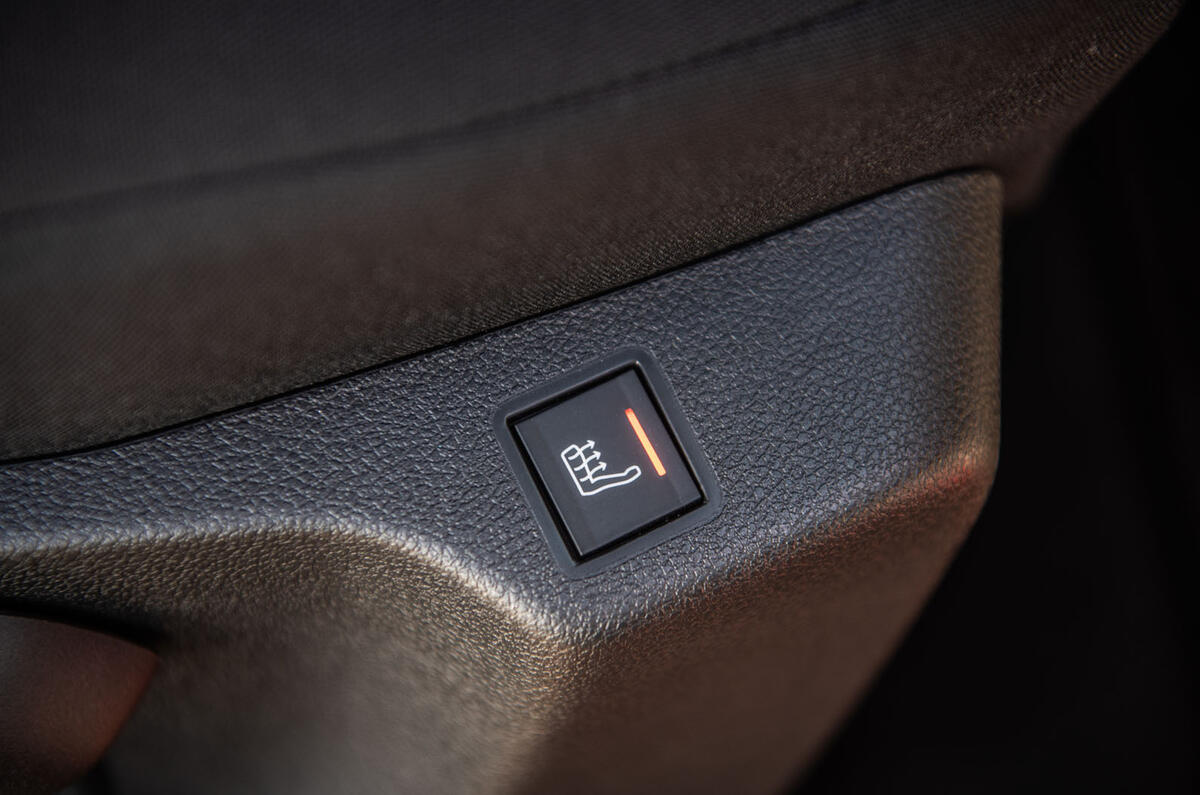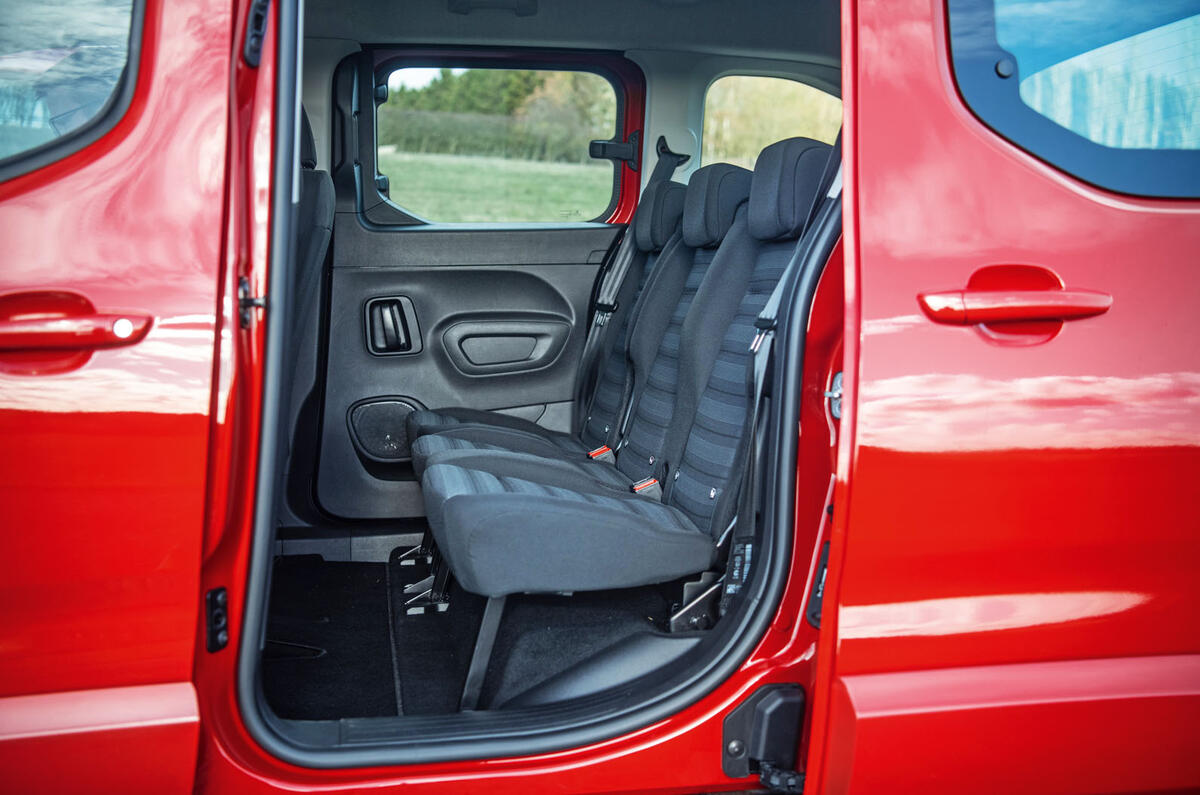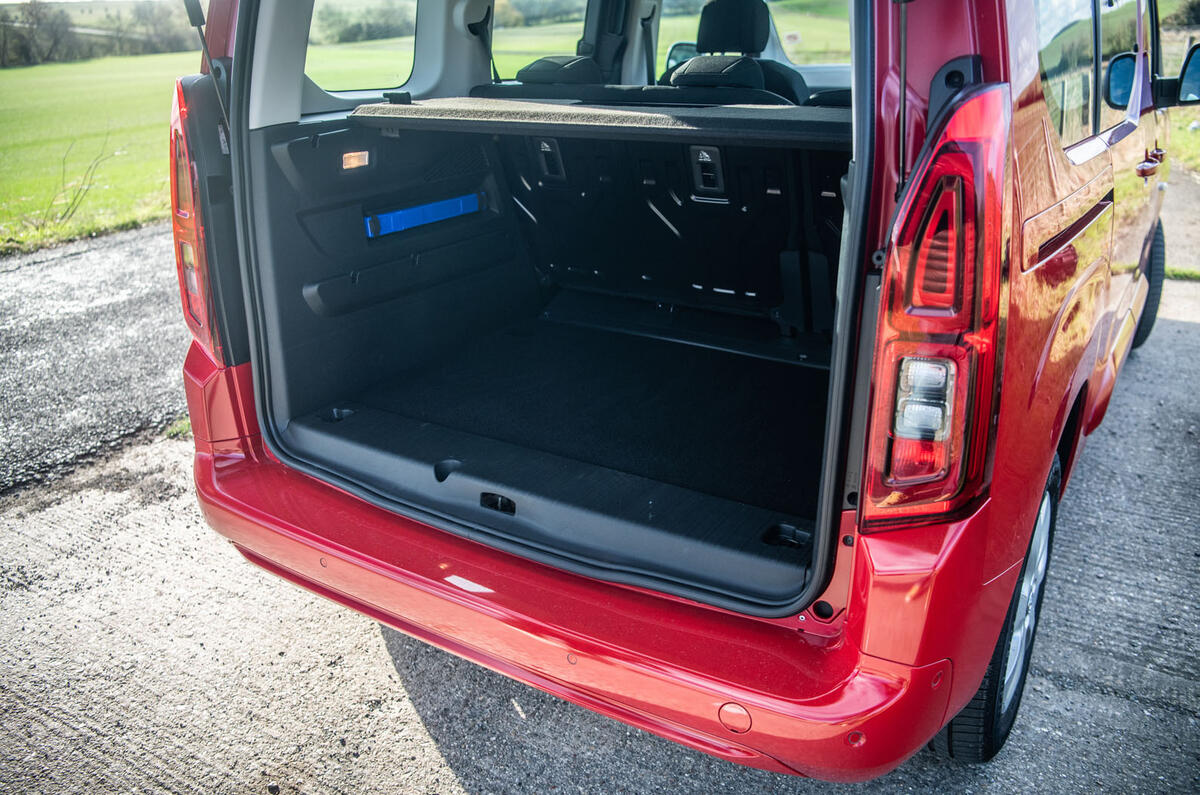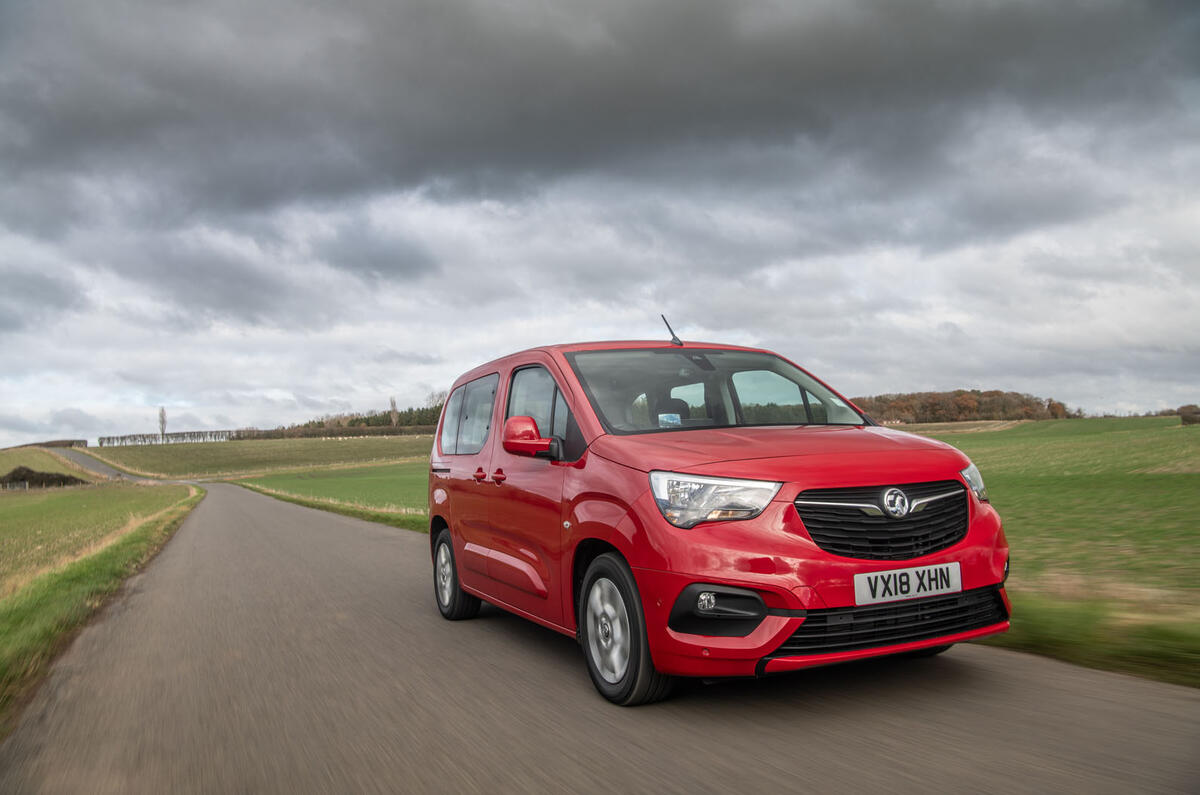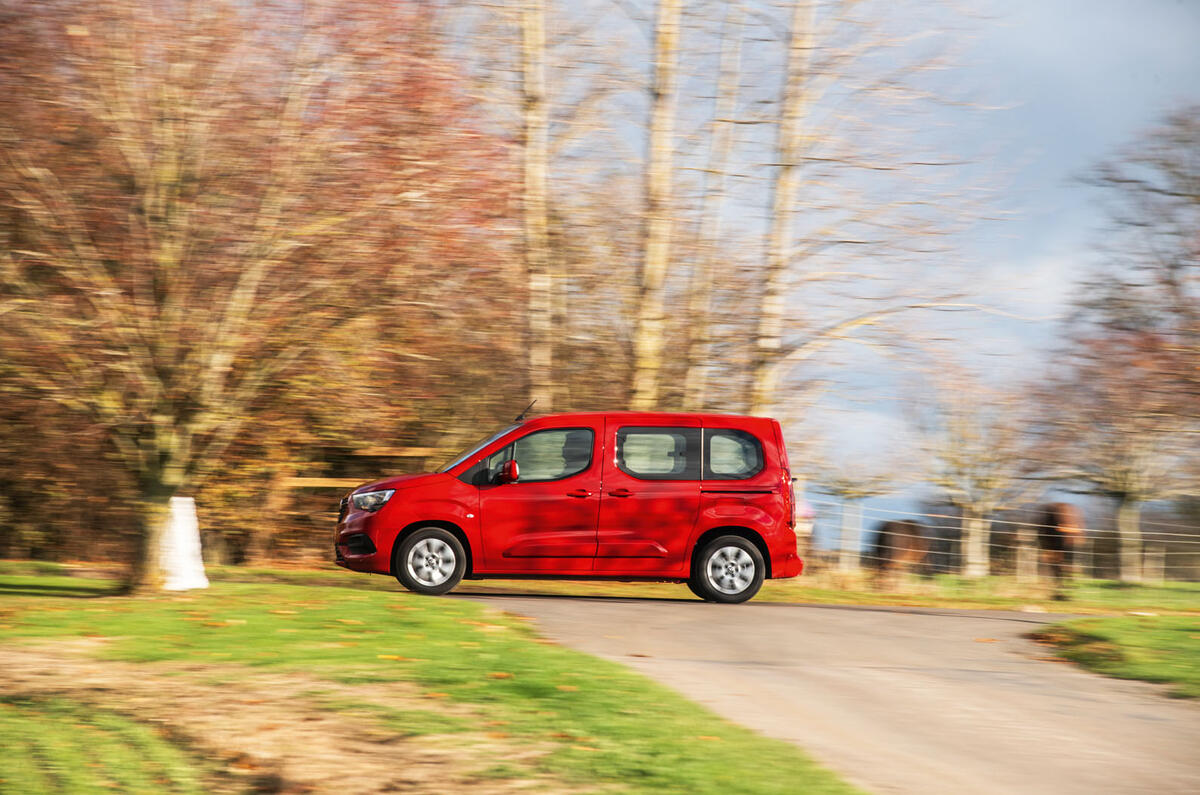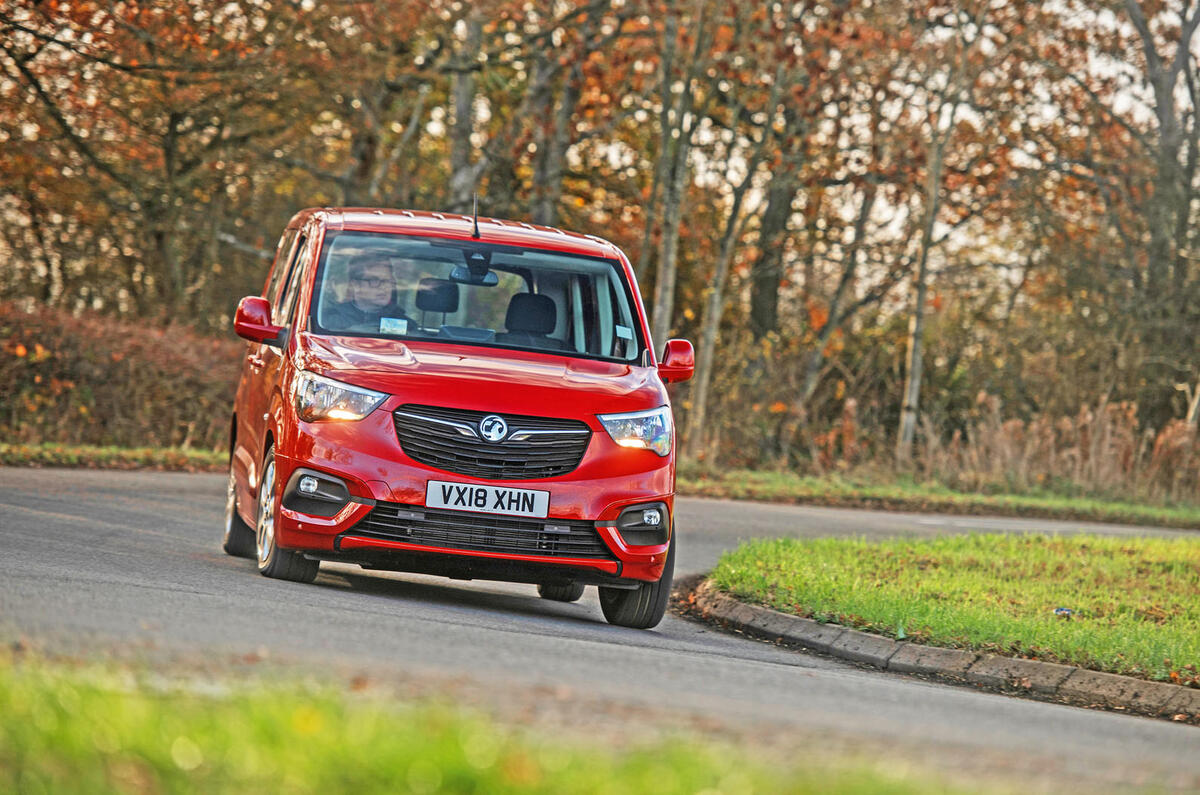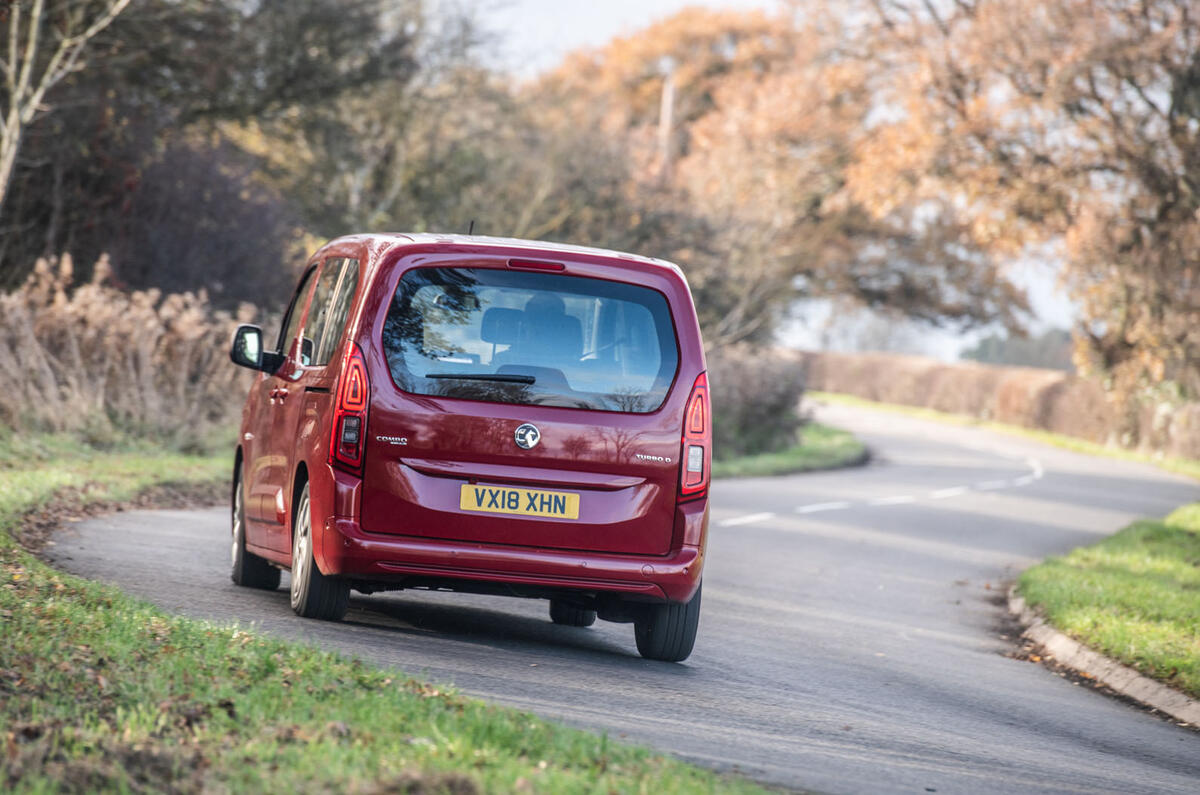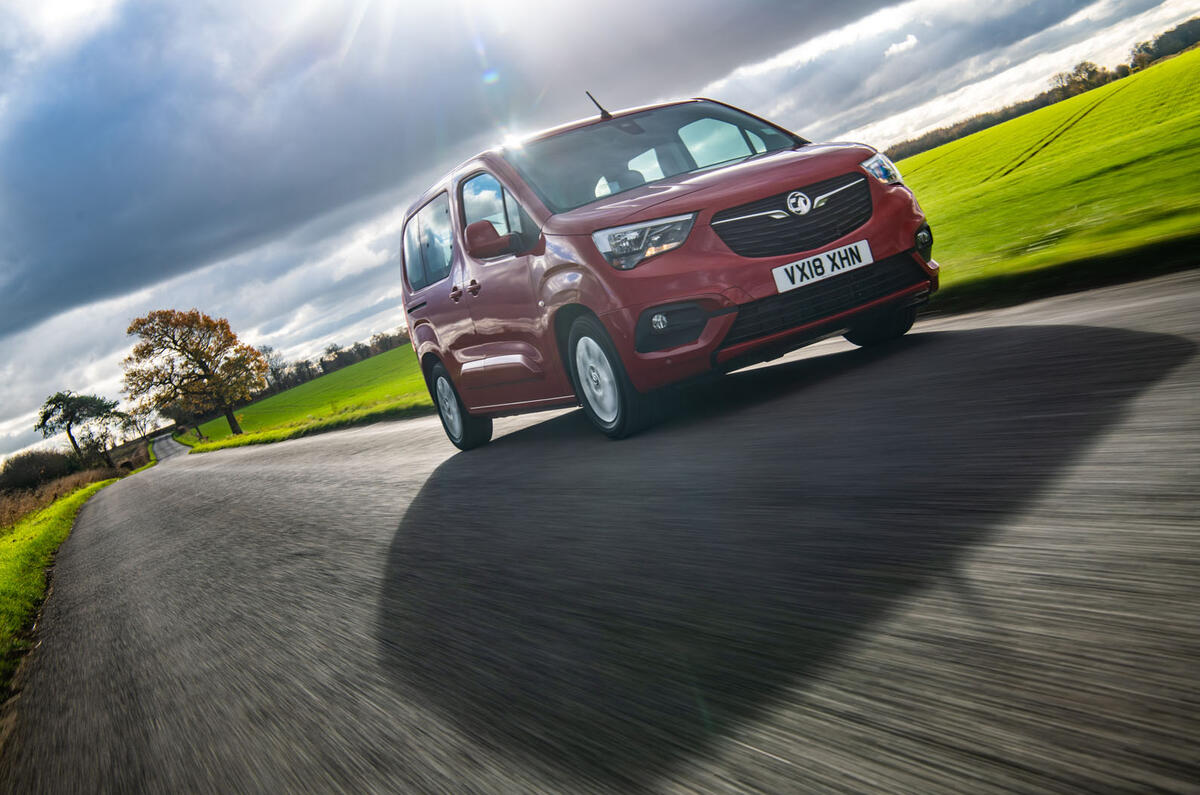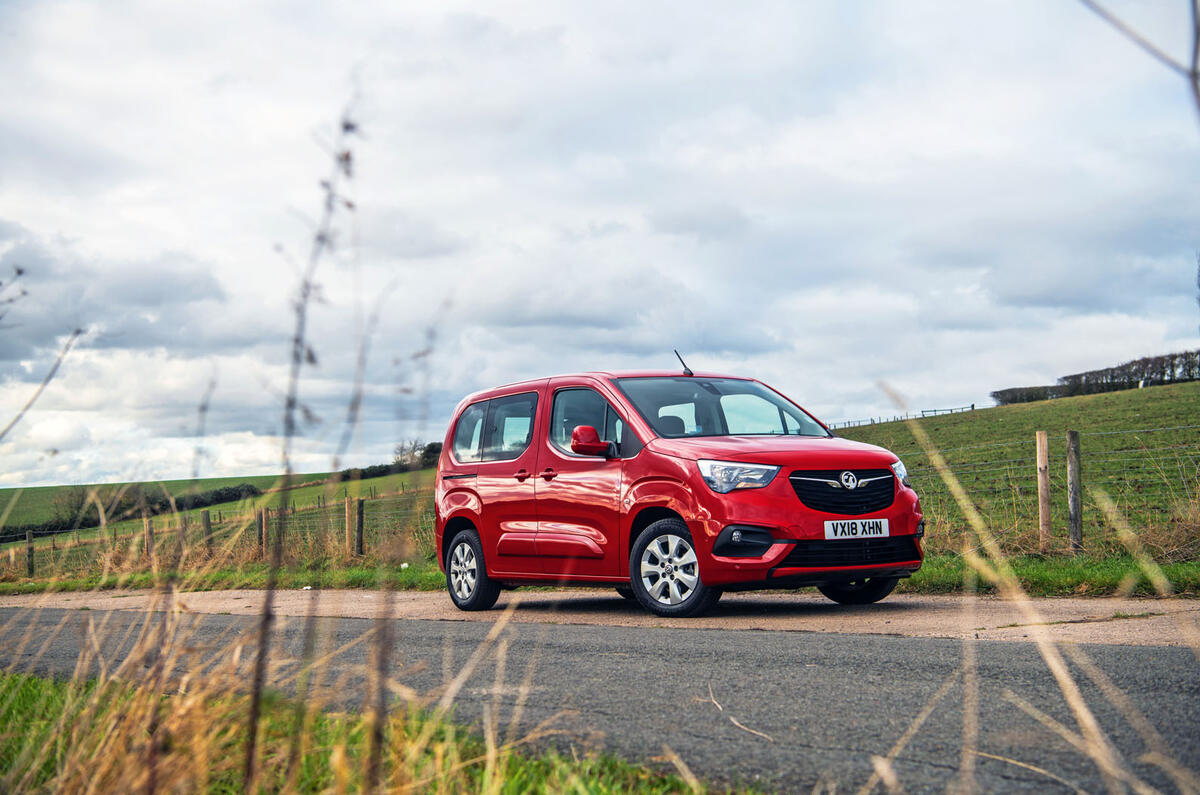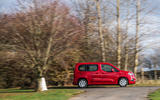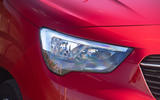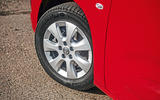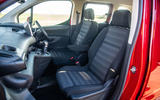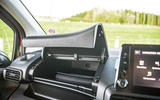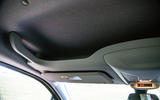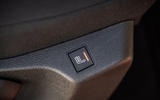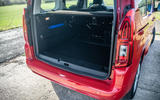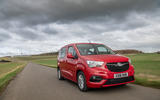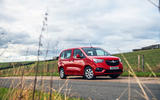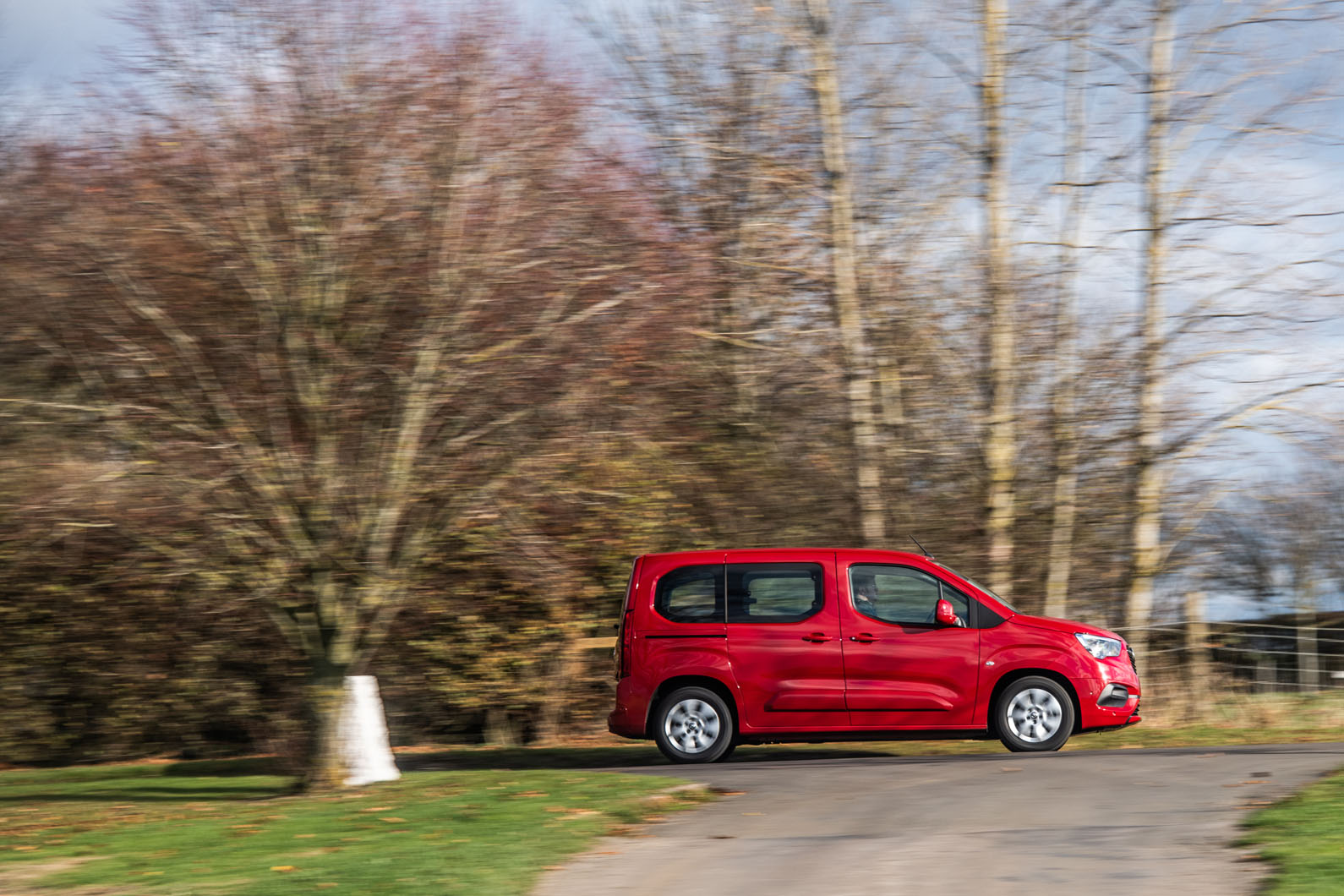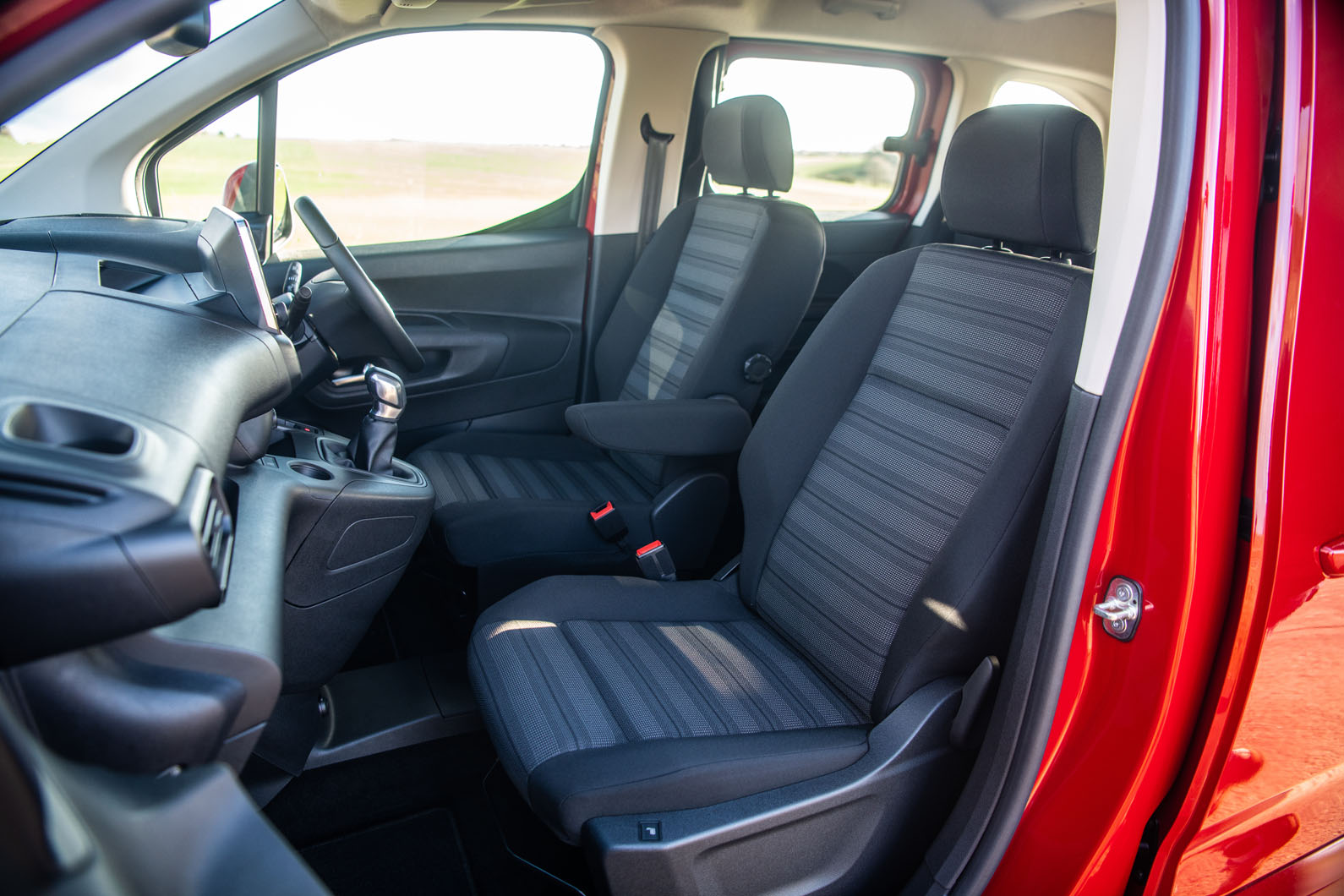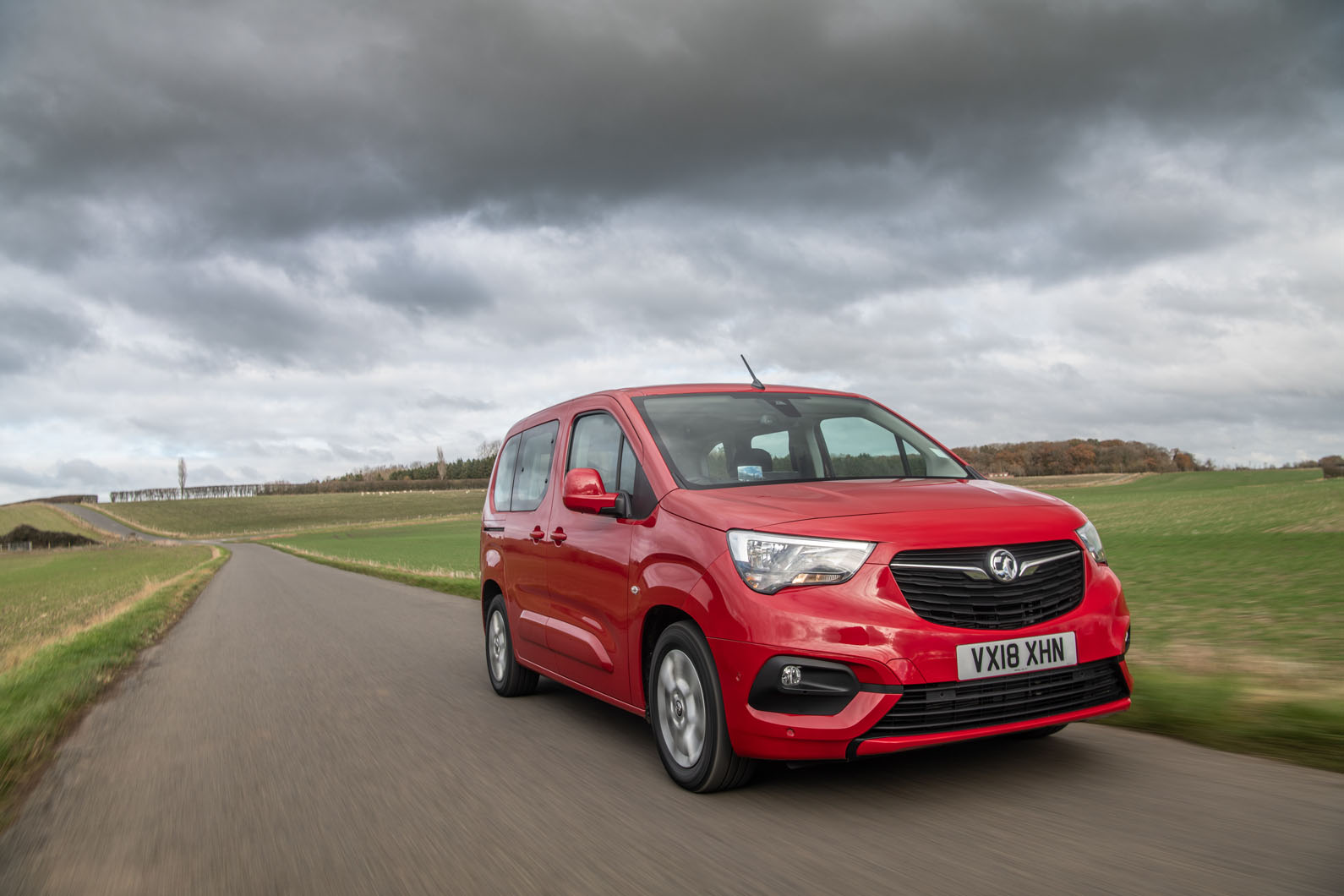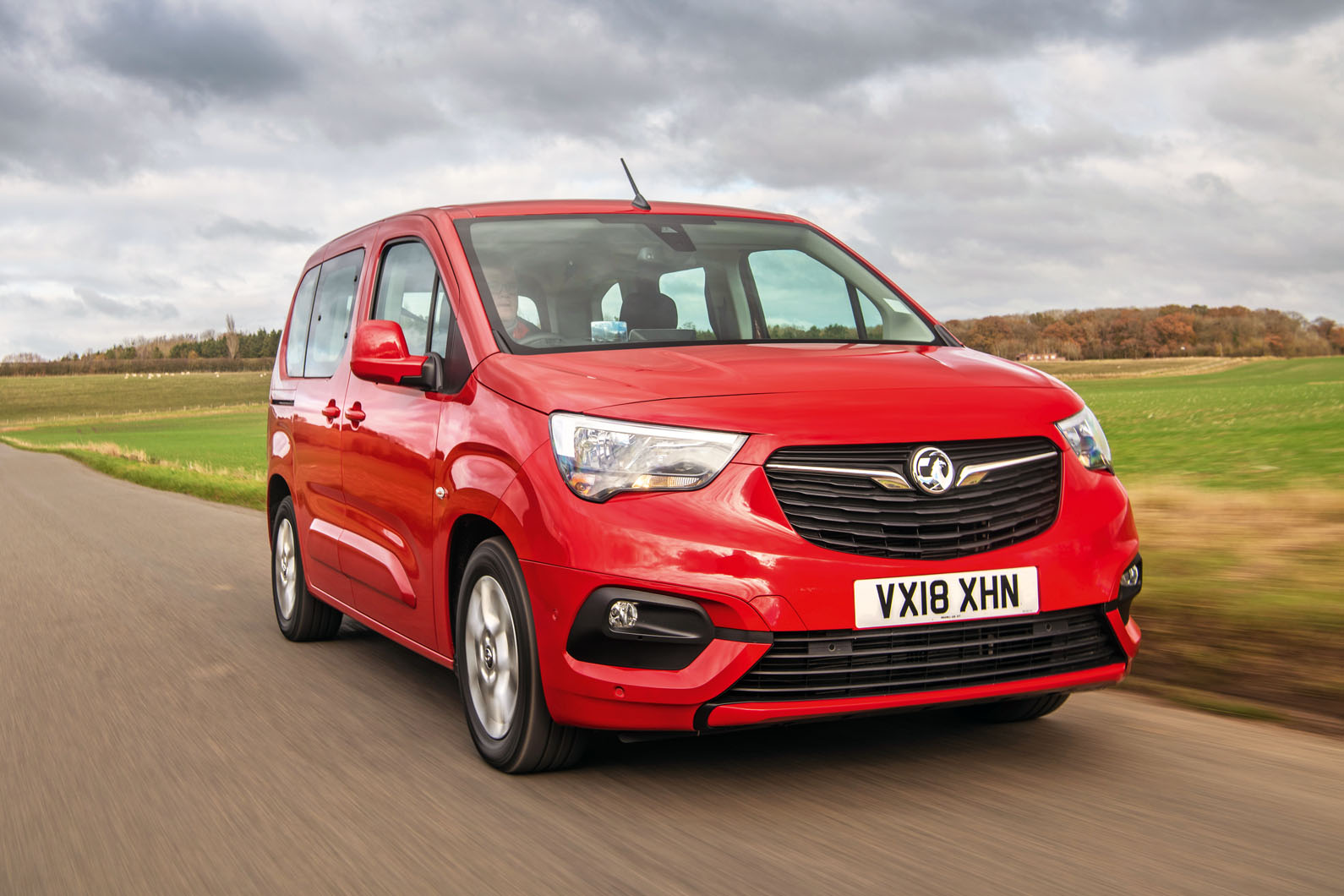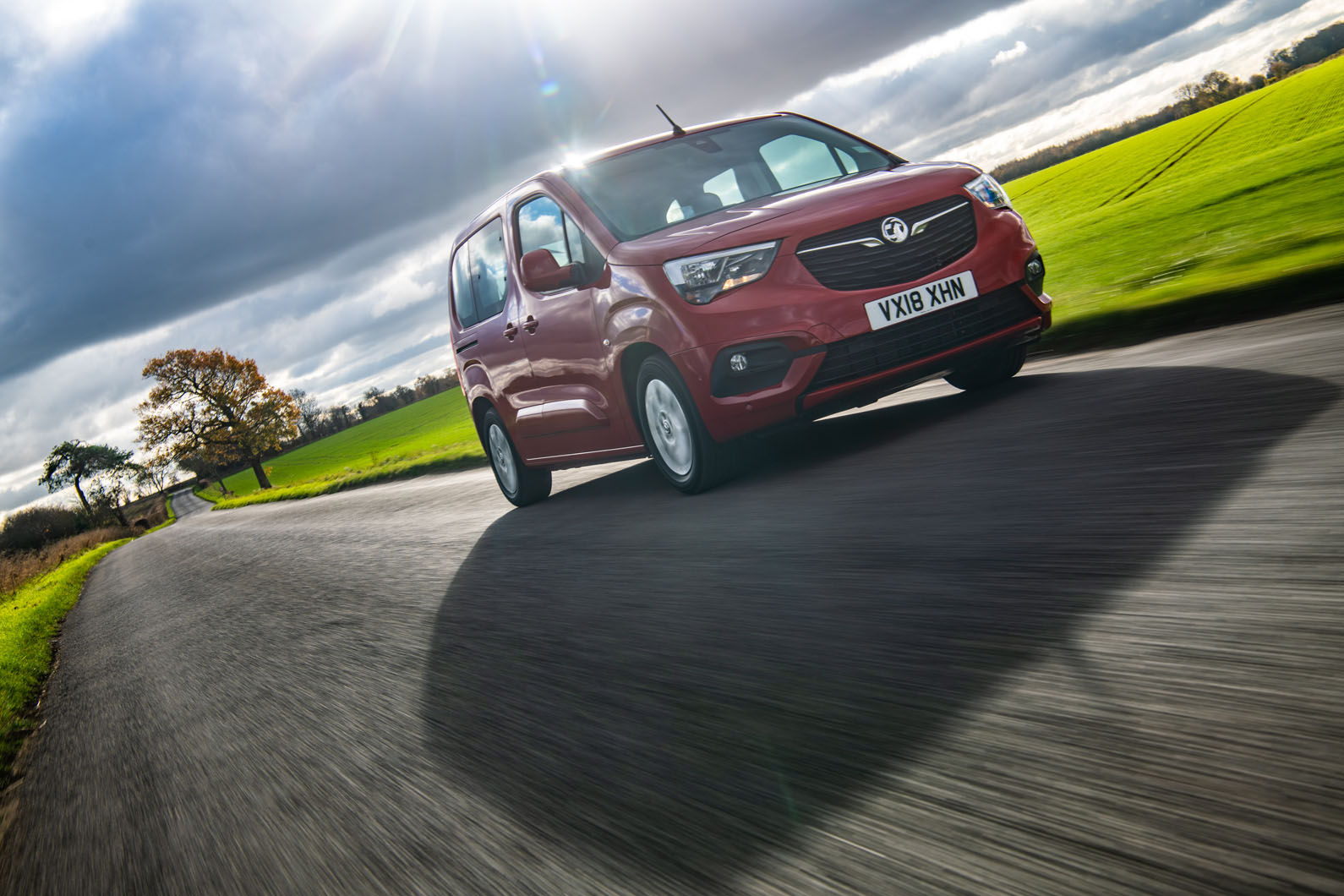The Combo Life has the kind of simple, practical interior that would suit an active, outdoorsy family with places to go and lots to carry but who aren’t likely to be too precious about a muddy boot carpet or a scuffed console. Even in what could be construed as being its least practical configuration – short wheelbase, five seats – this car still feels cavernous.
It’s the boxy, van-like profile that delivers a large part of its practicality. Not only does that high roofline allow for a top-hat-friendly 1050mm of headroom both front and rear but it also contributes to the 597-litre seats-up boot space (measured up to the window line only). The boot’s wide, square-shaped aperture assists with the easy loading and unloading of bulkier items, while collapsing the 60/40 split-folding second-row seats will liberate a total 2126 litres. If you want more, the bigger Combo’s boot volume stands at 850/2693 litres.
The Combo Life offers three good-sized second-row passenger seats and generous headroom, as well as a fairly tidy amount of legroom (630mm), so five adults can be seated comfortably on longer trips.
The car’s emphasis on practicality and functional simplicity, and also its price positioning, go some way to excusing its rather bare interior. The cabin has large door bins, some underseat and underfloor storage and a good-size roof storage bin up front, as well as a large glovebox whose capacity and accessibility is improved a lot thanks to the roof-mounted passenger airbag.
Elsewhere, though, it is disappointing to note that so many of the car’s most clever storage and convenience features – its separately opening tailgate window, fold-flat front passenger seatback, full-length longitudinal overhead storage console and airline cabin-style overboot storage cubby – are optional extras even on the pricier upper trim level cars, and not all are available on ‘XL’ long-wheelbase or seven-seat versions of the car.
With all of those features on a long-wheelbase, seven-seat body, we suspect the Combo Life could easily feel like just about the most practical affordable family car on the road, but having tested it without many of them, there’s certainly room enough to question Vauxhall’s claims.
The Combo Life’s 8.0in touchscreen infotainment system is perhaps the most obvious sign of Vauxhall’s amalgamation with the PSA Group. Drivers of Peugeots and Citroëns will recognise the software instantly.
As is the case in those vehicles, it all works well enough in the Vauxhall – but not to the point where you could call it outstanding. The operating system is reasonably intuitive to use, and toggling between various menus is easy enough thanks to touchsensitive buttons on the screen frame, but the graphical presentation itself isn’t particularly slick, and neither is the system very responsive.
Apple CarPlay and Android Auto are both included with the suite, and the chances are these will become the default operating systems of choice for most users – if only because they provide access to navigation apps such as Google Maps and Waze. It’s worth pointing out that Energy is the only trim level to feature the 8.0in screen. Lower-spec Design models do, however, still come equipped with DAB radio, Bluetooth and USB connectivity.


